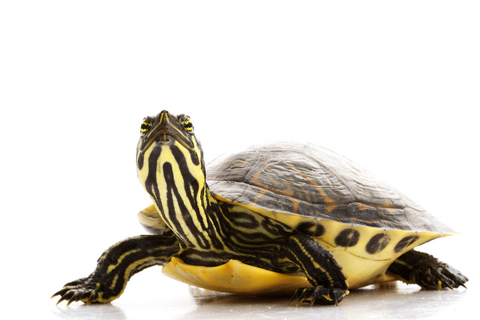Trachemys scripta, known
locally as the yellow-bellied slider, is a fairly common freshwater
turtle in the southeastern United States. They are often seen around
still bodies of water, basking on logs or the banks, sometimes doing
so in large groups.
My own
grandparents live in a golf course community in Myrtle Beach, and my
aunt and I will go and feed leftover bread to the turtles in the
ponds throughout the courses. Perhaps not the most nutritional meal,
but we love watching them poke their heads up out of the water and
swarm towards us – there must be at least 50 in the pond right
behind their house!
They
are very interesting turtles, despite how common they are. Their
carapace has as beautiful wavy pattern on it and their plastron is a
bright yellow with dark swirls on the sides. This, however, does fade
with time, and older turtles generally don't have distinctive
patterns. Their skin is yellow and green striped, and one of the best
indications that it is a yellow-bellied slider is the yellow spot
behind the eye.
Females
tend to be larger than males, a general sexual dimorphism found in
turtles. In yellow-bellied sliders, males also tend to have longer
toe nails than females. Males will use their long nails to stroke the
face of the female they are attempting to seduce. How lovely....
Interestingly,
the yellow-bellied slider's diet changes with age. When they are
young, they are almost entirely carnivorous, eating insects, fish,
and the babies of fellow herps (tadpoles). However, as they age they
begin to consume only plant matter, and when they are adults the vast
majority of their diet is vegetarian. They can live to be about 30
years old in the wild, and 40 years old in captivity. That's pretty
cool!
This was a turtle we found at Dixie Plantation. He seemed to be happy to have his picture taken!


1 comment:
Nice photo, Maria!
Post a Comment